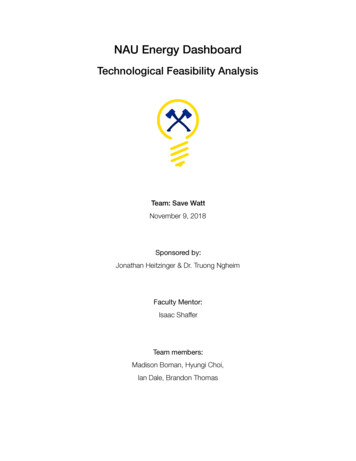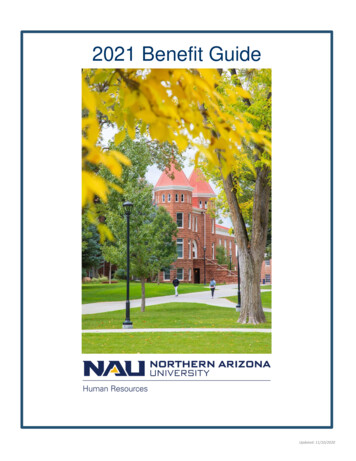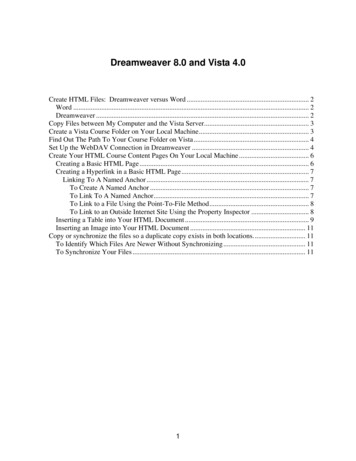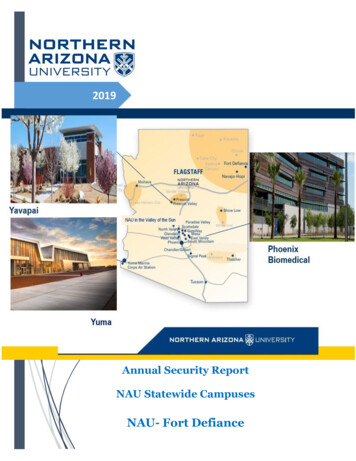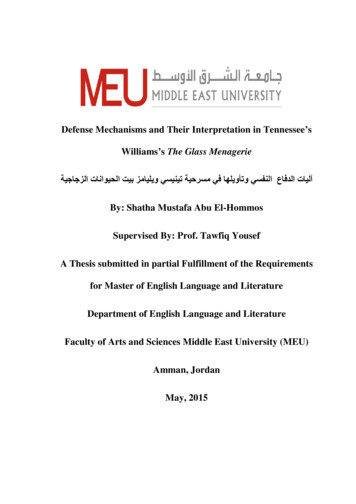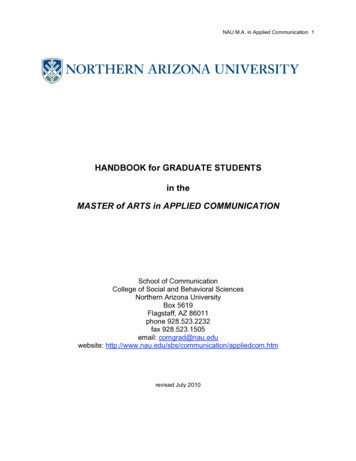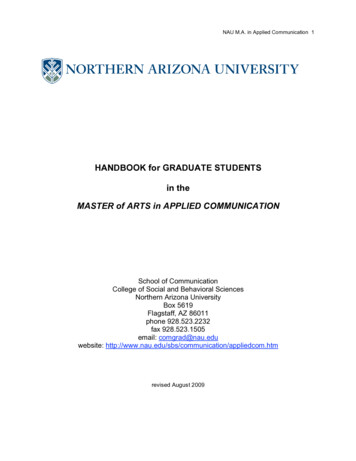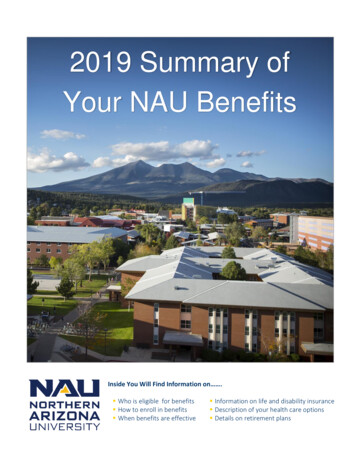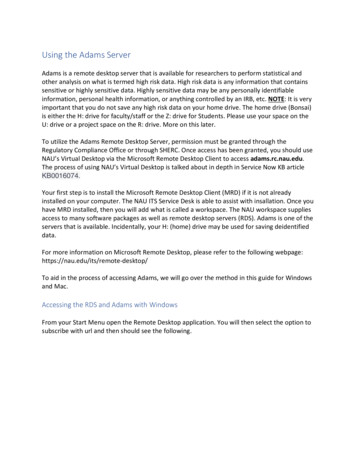
Transcription
Chapter 14Topics- Defense Mechanisms- Non-specific immunityDefense Mechanisms Innate - Non specific– First line of defense– Second line of defense Acquired - Specific– Third line of defenseSummary of the major components of the host defenses.First line of defense Barriers– Anatomical– ChemicalAnatomical barriersThe trachea contain cilia that entrap and propelparticles out of the respiratory tract Skin––––Outermost layerHair folliclesSkin glandsDequamationCiliary Escalator Mucous F1
Chemical barriers Sebaceous secretions Tears and saliva – lysozyme Acidic pH– Sweat– Stomach– Skin– Semen– Vagina - mediated by presence ofLactobacillusWBCImmunology Study of the development of resistance toinfectious agents by the body– Surveillance of the body– Recognition of foreign material– Destruction of foreign material or agent Involve nonspecific (Second line) andspecific (Third line) immune defensesystems White blood cells (WBC) or leukocytes areinvolvedSearch, recognize, and destroy is the mandateof the immune system WBC recognize "self" markers on thehost cell– Do not attack or do not respond to hostcell WBC recognize non-self markers onthe invading microbe–Attack or respond to microbeBloodHemopoiesis Stem cells precursors Hemopoiesis Components Production of blood– Starts at the embryonic stage Yolk sac and liver– Continues during adult stage– Hematopoietic stem cells in bone marrow2
LymphoidMyeloidWhite blood cells Leukocytes– Granulocytes (large cytoplasmicgranules) Neutrophils Basophils EosinophilsThe macroscopic composition of whole bloodNeutrophils Present in high numbers in blood andtissue Phagocytizes bacteria – granulescontain digestive enzymes First to arrive during an immuneresponse (inflammation)– Agranulocytes T cells B cells MonocytesEosinophils Contain granules with hydrolyticenzymes Attach and destroy large eucaryoticpathogens (worms) Associated with inflammation andallergiesBasophils Present in low in number in the body Function is similar to eosinophils.Involved in allergic reactions due tocytoplasmic granules Localized basophils are called mastcells3
Lymphocytes Specific immunity– T cells cellular immunity– B cells humoral/antibody immunity Third line of defense Present throughout the bodyMonocytes Agranulocyte Differentiate into macrophages(circulation and lymphatics) anddendritic cells (tissue associated) PhagocytosisLymphatic system Network of vessels, cells, and tissues thatextend to most body areas Connected to the blood system Provides an auxiliary route for the return ofextracellular fluid to the circulatory system “Drain off” system for inflammatory response Contains lymphocytes, phagocytes andantibodiesRepresentation of the lymphatic system.Lymphatic system FluidsVesselsNodesSpleenThymusMiscellaneous (GALTGut-associated lymphoidtissue (GALT) Recognized incoming microbes fromfood Supply lymphocytes for antibodyresponse Ex. Appendix, lacteals, Peyer’s patches4
Non-specific ImmunitySecond Line of Defense mation - 1Inflammation Four major symptoms– Redness– Warmth– Swelling– PainThat result in Cellular DamageCauses Trauma Tissue injury due to physical orchemical agents Reaction to foreign pathogens orbodies (ie medical implants)Inflammation - 2Function Mobilize and attract immunecomponents to the site of injury Localized and remove harmfulsubstances Destroy microbes and block theirinvasion Aid in the repair of tissue damage5
Chemical mediators during inflammation.1. Vascular changes Blood cells, tissue cells, and plateletsrelease chemical mediators andcytokines Chemical mediators– Vasoactive Affect endothelial cells, smooth muscles ofblood vessels– Chemotactic (chemokines) Affect WBCThe transmigration of WBCs is followed by chemotaxis.2. Edema Leakage of vascular fluid (exudate) intotissue Exudate - plasma proteins, blood cells(WBC), debris, and pus Migration of WBC is called diapedesisor transmigration– Chemotaxis3. Fever Caused by pyrogens– reset the hypothalamic thermostat(increase temperature) Pyrogens– Microbes and their products (ex. LPS)– Leukocyte products (ex. lnterleukins)– IL-1 resets the thermostat Inhibits microbe and viral multiplication,reduces nutrient availability, increasesimmune reactionsPhagocytosisNeutrophils andmonocytes/macrophages (anddendritic cells) are calledprofessional phagocytesEosinophils6
PhagocytosisNeutrophils - First to arrive during animmune response (inflammation) Neutrophils are primary componentsof pusMonocytes/Macrophages Differentiate into macrophages(circulation and lymphatics) anddendritic cells (tissue associated)Mechanism of Phagocytosis ages Monocytes/macrophages motile Specialized/Residents:– Alveolar lungs– Langerhan cells skin– Kupffer cells liver 1) Responsible for phagocytosis 2) Interact with B and T cells1. Chemotaxis & binding Directed by– Pathogen-associated molecular patterns(PAMPs) Peptidoglycan LPS– Foreign debris2. Ingestion Pseudopods enclose the pathogen orforeign material Form a phagosome or phagocyticvacuole7
3. Phagolysosome Lysosomes fuse with the phagosome Other antimicrobials chemicals arereleased into the phagolysosome4. Destruction Within the phagolysosome– A) Oxygen-dependent mechanisms –Similar to byproducts of respiration– B) Oxygen-independent mechanisms –due to numerous hydrolytic enzymes Undigestible debris are releasedInterferon Produced due to viral infections,microbe infections, RNA, immuneproducts, and antigens8
ActivityClasses Interferon alpha– Product of lymphocytes and macrophages Interferon beta– Product of fibroblasts and epithelial cells Interferon gamma– Product of T cells Ex. Virus - binds to host cell A signal is sent to the nucleus tosynthesized (transcription and translation)interferon Interferon is secreted Binds to other host cells Host cells produce antiviral proteins– inhibit viral multiplication or translation Not virus-specificInterferon is produced, released, and taken-up by a near-by cell,where by original cell is not protected but the recipient cell isprotected.Other Roles of Interferon Activates and instructs T and B celldevelopment Inhibits cancer cells Activates macrophagesFig. 14.20 The antiviral activity of interferon.PathwaysComplement Classical Consist of 26 blood proteins Produced by liver hepatocytes,lymphocytes, and monocytes Pathways Cascade reaction Stages– Activated by the presence of antibody boundto microbes Lectin– Activated when a host serum protein binds asugar (mannan) in the wall of fungi and othermicrobes Alternative– Activated when complement proteins bind tocell wall or surface components of microbes9
The three complement pathways, their activators, andthe complement proteins involved.Stages InitiationAmplification and cascadePolymerizationMembrane attackTable 14.1 Complement pathwaysFig. 14.21aFig. 14.21bFig. 14.21d10
Complement does 3 things Inflammation C3a, C4a, C5a Opsonization C3b MAC killing C5-C911
Defense Mechanisms Innate - Non specific –First line of defense –Second line of defense Acquired - Specific –Third line of defense Summary of the major components of the host defenses. . foo

